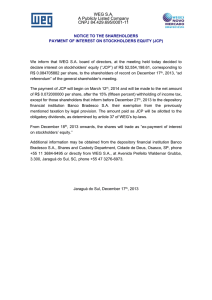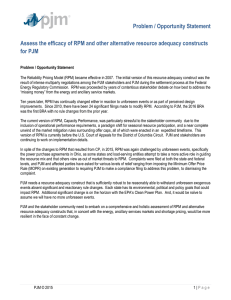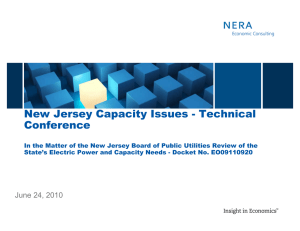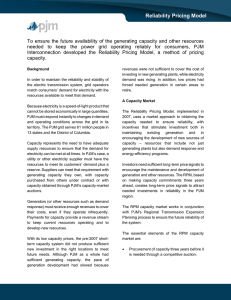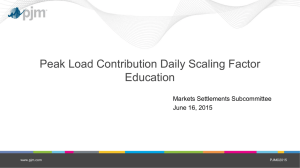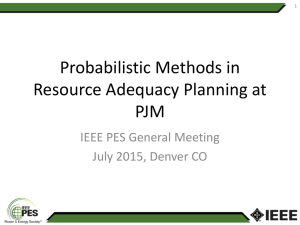NJ BPU Capacity Adequacy Technical Conference Solutions Panel Dean Stathis
advertisement
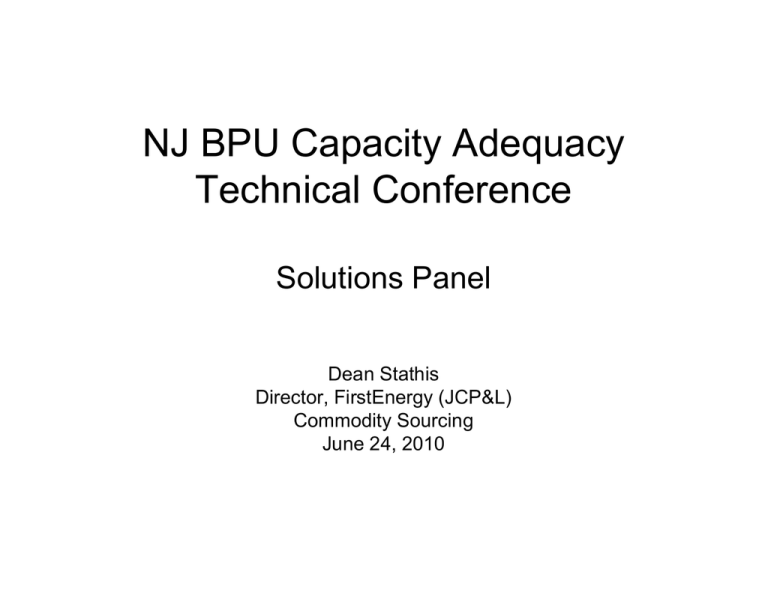
NJ BPU Capacity Adequacy Technical Conference Solutions Panel Dean Stathis Director, FirstEnergy (JCP&L) Commodity Sourcing June 24, 2010 JCP&L Corporate Background • NJ Distribution utility – 1,095,000 customers served in 13 counties – Summer peak seasonal variability: • 2006 = 6702 MW • 2009 = 5738 MW – Average Peak Day variability (peak/valley) • 3230 MW – Little company owned generation • 200 MW Pumped Hydro – Significant Non-utility portfolio • 764 MW long-term obligations 2 Theme #1: BGS, RPM and RTEP constructs are currently well functioning; Seek process improvement where appropriate • NJ Statewide Basic Generation Service procurement process producing relatively stable outcomes – Stable procurement model since 2002 provides demand backdrop for interested suppliers to source power supply – EDCs currently in BGS compliance filing process (July of each year) • PJM’s Capacity Market (“RPM”) sending proper price signals for capacity resource expansion – RPM capacity price signal incenting generation queue interest in higher priced locations; Over 1000 MW (2 sites) gas-fired by 2013 in JCP&L queue; – FE/JCP&L willing to participate in forums exploring improving gas-fired economics and/or Electric and Gas Industry Coordination • PJM’s Regional Transmission Expansion Planning process resulting in key large scale transmission project investments to relieve constraints in Eastern PJM – 500kV Susquehanna - Roseland Trx line connecting western PA with northern NJ most noteworthy – Analysis needed on LMP impacts of transmission projects 3 Theme #2: Learn from past experience • JCP&L does not support mandatory long-term utility based contracting for incenting new generation – Past NUG experience resulted in $1.6B over market costs for ratepayers since 2003 – Risk of incorporating 20 plus year projections of energy prices into long term contracts – Negative impacts on balance sheet and credit rating – Risks should not be shifted to customers 4 Theme #3: Pursue technology-driven renewable and demand-side activities customers can touch • Renewable Activity – Help jump start NJ Solar market with competitively bid SREC financing program (42MW target) – Adding small scale solar capacity to meet RPS/EMP – Early returns promising • Demand-Side Activities – Legacy residential one-way direct load control program (18 MW target) • Cycles participants air conditioner in 15-minute intervals – IDER Smart Grid initiative (38 MW target) • Targeted peak load management through two-way communication located in selected high growth areas • Scalable; Three phases planned • Both Renewable and Demand-Side approaches will help address capacity adequacy, but inherent uncertainty about achievable levels exist 5 Conclusions • • • Seek process improvements to BGS process and PJM capacity/transmission market models for shaping future project additions JCP&L offers its negative experience with bilateral long-term contracts as a reminder of the potential poor outcomes for ratepayers when trying to incent generation through this approach Tap growing customer energy awareness – Provide solar renewable programs for attracting new solar capacity to meet RPS/EMP goals – Deploy scalable Smart Grid initiative to qualified participants to help mitigate future capacity additions in NJ and provide needed system reliability during peak periods 6
